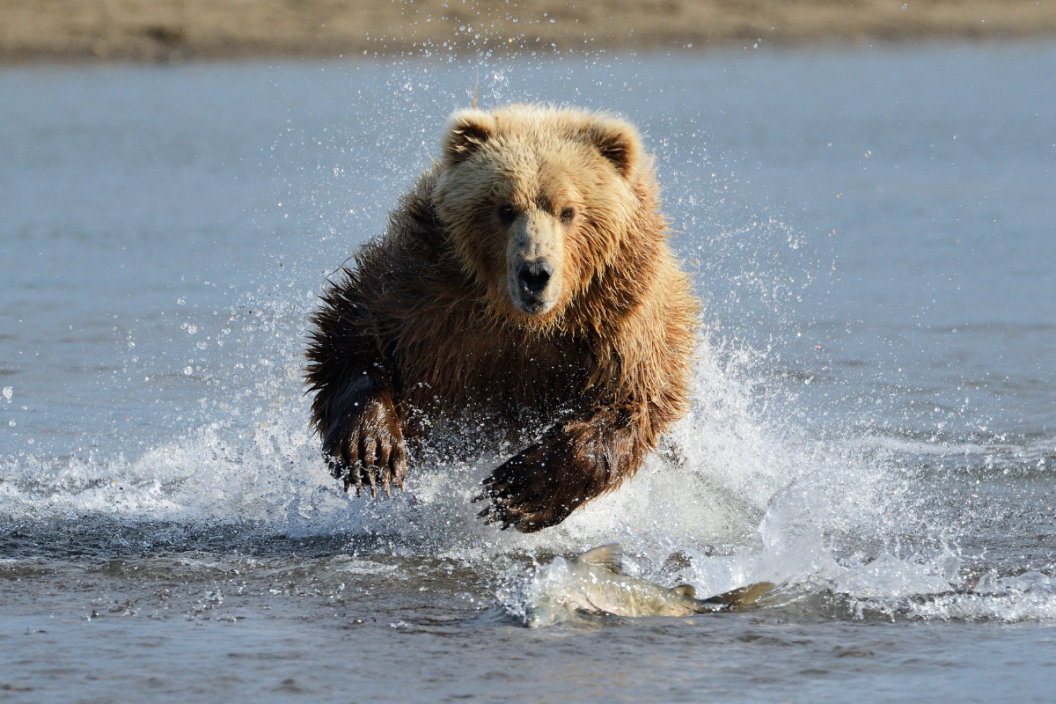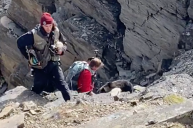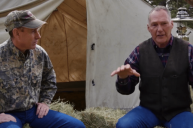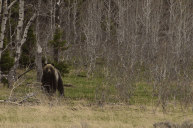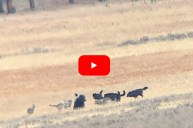As winter turns into spring, bears will soon return to their old haunts within national parks and other outdoor spaces. Nature lovers may well encounter one in the wilderness and need to be prepared just in case. In a recent Twitter post, the National Park Service weighed in on bear encounter best practices in the most humorous fashion. Officials tweeted that you should "never push a slower friend down," even if that means you will be able to get away. However, the NPS added the caveat that "even if you feel the friendship has run its course," you shouldn't sacrifice a friend.
"Seeing a bear in the wild is a special treat for any visitor to a national park," officials said. "While it is an exciting moment, it is important to remember that bears in national parks are wild and can be dangerous."
To avoid being injured by a bear — either you or your friend — there are a few ways to handle a bear encounter, keeping everyone alive and all friendships intact.
"Keeping your distance and not surprising bears are some of the most important things you can do. Most bears will avoid humans if they hear them coming," the park service said. They want to interact with you about as much as you want to interact with them.
The NPS points out that while bears may be cuddly looking, they are wild animals and should be treated as such. In addition, officials said, "their behavior is sometimes unpredictable."
Bear attacks are few and far between; but as rare as they are, they do happen. Recently, a polar bear in Alaska killed a woman and her baby. The attack shook the community and was the first to happen in decades. Before that, a grizzly attacked two men in Wyoming. The pair wandered off the trail, looking for elk and deer antlers. The bear was startled by their presence and attacked. According to the World Animal Foundation, around 40 bear attacks occur yearly. The foundation said half of the attacks from 2000 to 2015 took place because a mother bear felt she had to defend her cub. Currently, the NPS estimates the risk of a bear attack to be 1 in 2.7 million visits.
"Most bear encounters end without injury," the NPS says. "Following some basic guidelines may help to lessen the threat of danger. Your safety can depend on your ability to calm the bear."
Obviously, your first course of action is to avoid interacting with a bear altogether. However, if one can't be avoided, the NPS said you should do the following:
- Wave your arms in the air slowly and stand your ground.
- Stay calm and talk in low tones — no sudden movements or loud noises.
- Pick up small animals and children.
- Always hike or travel with a buddy, although you're safest in large groups.
- Carry bear spray to deter aggressive, attacking bears.
There are also things to avoid:
- Don't feed bears.
- Don't drop whatever you're carrying.
- Don't run or turn your back to the bear.
- Don't climb up a tree, because they can climb, too.
- Don't put yourself between a mom and her cub.
The NPS also points out that if a bear attacks you, you should fight back and not play dead.
Always have a plan just in case, the NPS says, and "remember, you are a visitor in their home."
